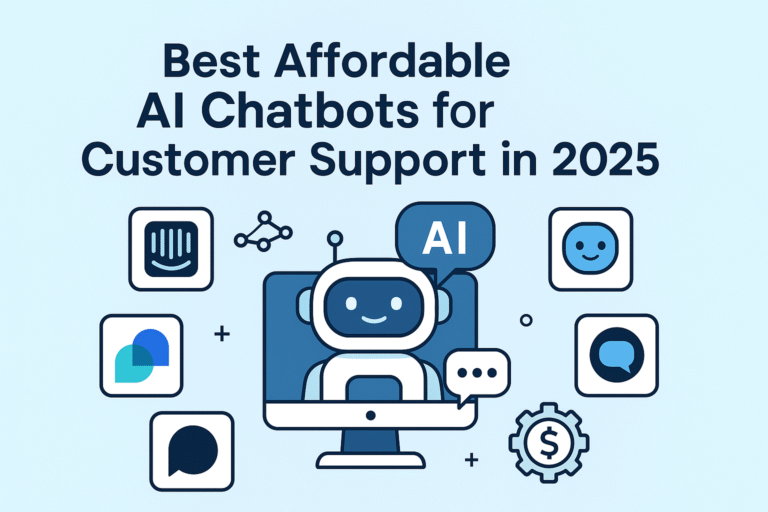In recent years, AI-powered software has revolutionized industries, bringing automation, predictive capabilities, and intelligent solutions to the forefront. A significant part of this success is due to machine learning (ML) libraries, which simplify complex AI development. Whether you’re a beginner or a seasoned developer, choosing the right ML library can make or break your AI project. In this post, we’ll explore the best machine learning libraries available today, their standout features, and why they’re trusted by professionals across the globe.
1. TensorFlow
- Key Features: Developed by Google, TensorFlow is known for its scalability and flexibility. It supports deep learning and neural networks with a vast ecosystem of tools like TensorBoard and TensorFlow Hub.
- Pros: Highly scalable, strong community support, excellent for both beginners and advanced users, and offers pre-trained models.
- Cons: Steeper learning curve for newcomers, relatively heavy.
- Pricing: Free and open-source.
2. PyTorch
- Key Features: PyTorch is a favorite among researchers due to its dynamic computational graph, making it easier to modify models during runtime. It also integrates well with Python, making it user-friendly.
- Pros: Intuitive, supports dynamic computation, strong research community, high flexibility.
- Cons: Less mature deployment tools compared to TensorFlow.
- Pricing: Free and open-source.
3. Scikit-Learn
- Key Features: Ideal for data mining and analysis, Scikit-Learn is built on NumPy, SciPy, and Matplotlib. It’s excellent for classical ML algorithms such as regression, classification, and clustering.
- Pros: Easy to use, integrates well with Python, great for small and medium-sized datasets, comprehensive documentation.
- Cons: Limited for deep learning, not suitable for large-scale datasets.
- Pricing: Free and open-source.
4. Keras
- Key Features: Keras is a user-friendly library that focuses on simplicity and ease of use. It’s often used as a high-level API for TensorFlow. It’s perfect for quick prototyping of neural networks.
- Pros: Intuitive and easy to use, fast prototyping, modular and flexible.
- Cons: Limited customizability compared to lower-level libraries.
- Pricing: Free and open-source.
5. XGBoost
- Key Features: XGBoost is a highly efficient library optimized for gradient boosting, a method often used for supervised learning problems. It’s known for its speed and performance in structured datasets.
- Pros: High performance, great for structured/tabular data, robust community support, scalability.
- Cons: Limited support for deep learning.
- Pricing: Free and open-source.
6. LightGBM
- Key Features: LightGBM is another gradient boosting library that excels in handling large datasets. It’s known for faster training speeds and lower memory usage.
- Pros: Faster training compared to XGBoost, handles large datasets well, efficient in memory usage.
- Cons: Can be sensitive to data distribution and hyperparameters.
- Pricing: Free and open-source.
7. CatBoost
- Key Features: CatBoost is a gradient boosting library developed by Yandex, known for handling categorical data efficiently. It requires minimal data preprocessing.
- Pros: Excellent for categorical data, easy to use, fast training, reduces overfitting.
- Cons: Limited customization compared to TensorFlow and PyTorch.
- Pricing: Free and open-source.
8. OpenCV
- Key Features: OpenCV is a powerful library primarily for computer vision tasks. It supports deep learning and image processing with various built-in algorithms.
- Pros: Rich functionality for image processing, great for computer vision projects, cross-platform support.
- Cons: Not specifically a machine learning library, requires understanding of image processing.
- Pricing: Free and open-source.
9. Apache Spark MLlib
- Key Features: Spark MLlib is the machine learning library of Apache Spark, designed for scalable and distributed computing. It’s excellent for handling large-scale data.
- Pros: Scalable, supports distributed computing, integrates with Hadoop, good for big data.
- Cons: Lacks some advanced ML algorithms, more complex setup.
- Pricing: Free and open-source.
10. Hugging Face Transformers
- Key Features: Hugging Face is a leading library for natural language processing (NLP). It offers pre-trained models and fine-tuning capabilities for tasks like text classification, sentiment analysis, and translation.
- Pros: Pre-trained models, excellent for NLP tasks, strong community support.
- Cons: Primarily focused on NLP, requires understanding of transformers.
- Pricing: Free and open-source.
Conclusion
Choosing the right machine learning library depends on your project’s needs, expertise, and goals. TensorFlow and PyTorch dominate in deep learning, while Scikit-Learn is perfect for classical ML algorithms. For specialized areas, libraries like OpenCV for computer vision or Hugging Face for NLP are excellent choices. By understanding the strengths and weaknesses of each, you can make an informed decision and accelerate your software development with the power of AI.








